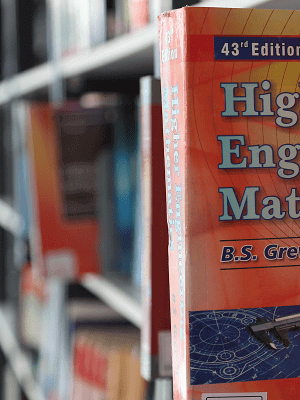Dr. Lokendra Singh
Assistant Professor
Dr. Lokendra Singh holds a Ph.D. in Mechanical Design from the Indian Institute of Technology (IIT) Mandi. During his doctoral research and beyond, he has worked extensively on non-destructive testing (NDT) methods. His research interests span acoustics, vibrations, machine design, and computer vision, with a strong focus on interdisciplinary applications.
He is particularly enthusiastic about experimental analysis in NVH domain using a wide range of sensors and data acquisition systems. Proficient in MATLAB and Python, he actively uses these tools for signal processing, simulation, and data analysis. He has also worked on deep learning-based methods for visual and vibration analysis.
Dr. Singh has expertise in IoT devices and computational technologies, and has published eight research papers (including journals, conferences, and book chapters), with several more under review or in preparation.
He has been involved in collaborative research with the Indian Air Force (Base Repair Depot, BRD-3, Chandigarh) for vibration detection in helicopters. At IIT Delhi, he worked as a Senior Project Scientist on a SIAM-sponsored project related to the Acoustic Vehicle Alerting System (AVAS) for electric two-wheelers. This project involved experimental trials at Automotive research association of India (ARAI, Pune) and international center for automotive testing (ICAT, Manesar).
His hands-on expertise includes working with advanced instruments such as laser vibrometers, sound level meters, a range of accelerometers, microphones, high-speed camera, and various DAQ (Data Acquisition) systems. He is also passionate about developing solutions using low-cost sensors, MEMS devices, and microprocessors.
In addition, he has experience using engineering software like LabVIEW, Simcenter, LISA, and SolidWorks. His current work focuses on mode shape identification and mode participation factor analysis using CV and low-cost sensor-based systems.
Organization email: This email address is being protected from spambots. You need JavaScript enabled to view it.
About
Schools
Admissions

- DSU Main Campus:
- Devarakaggalahalli, Harohalli,
Kanakapura Road,
Bengaluru South Dt. – 562 112
E-mail: admissions@dsu.edu.in - DSU City Innovation Campus:
- Administrative & Main Admission office,
Kudlu Gate, Hosur Road,
Bengaluru - 560 114
Admissions Helpline: 080 46461800 / 080 49092800 / +91 7760964277 / 8296316737 / 6366885507
E-mail: admissions@dsu.edu.in | dsat@dsu.edu.in - Office of Registrar: 080 4909 2910 / 11
Office of Dean (Engineering): +91 80 4909 2986 / 32 / 33
Dean - MBA: 080 4909 2931
Enquiry EMBA: 080 4909 2930
Research Cell: 080 4909 2912 - DSU City Admissions Office:
- Gate 2, 6th Floor, University Building,
Dental Block, Kumaraswamy Layout,
Bengaluru - 560111
Admissions Helpline: 080 46461800 / 080 49092800 - E-mail: enquiry@dsu.edu.in / admissions@dsu.edu.in





